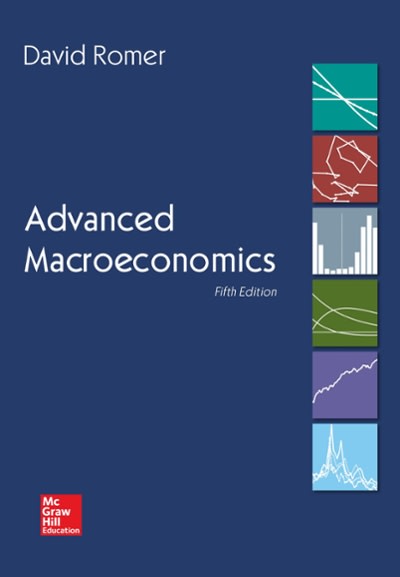A model of reputation and monetary policy. (This follows Backus and Driffill, 1985, and Barro, 1986.) Suppose
Question:
A model of reputation and monetary policy. (This follows Backus and Driffill, 1985, and Barro, 1986.) Suppose a policymaker is in office for two periods. Output is given by (12.63) each period. There are two possible types of policymaker, type 1 and type 2. A type-1 policymaker, which occurs with probability p, maximizes social welfare, which for simplicity is given by (y1−aπ2 1/2)+
(y2 −aπ2 2/2), a > 0. A type-2 policymaker, which occurs with probability 1− p, cares only about inflation, and so sets inflation to zero in both periods. Assume 0 < p < 1 2 .
(a) What value of π2 will a type-1 policymaker choose?
(b) Consider a possible equilibrium where a type-1 policymaker always chooses
π1 = 0. In this situation, what is πe 2 if π1 = 0? What value of π1 does a type1 policymaker choose? What is the resulting level of social welfare over the two periods?
(c) Consider a possible equilibrium where a type-1 policymaker always chooses
π1 = 0. In this situation, what is πe 2 if π1 = 0? What is the resulting level of social welfare over the two periods?
(d) In light of your answers to
(b) and (c), what is the equilibrium? In what sense, if any, does concern about reputation lower average inflation in this environment?
(e) In qualitative terms, what form do you think the equilibrium would take if 1 2 < p < 1? Why?
Step by Step Answer:







